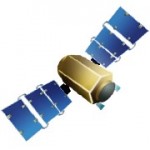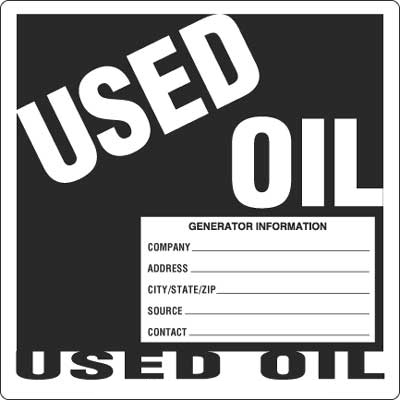This list, compiled by the Compliance Branch of the Indiana Department of Environmental Management, shows in descending order the ten violations found most frequently at Indiana facilities in calendar year 1989. (Old, I know, but I think it represents the state of compliance for many facilities today.)
For each violation, the applicable Federal (USEPA) or State (IDEM) regulation is cited and – when available – links to articles I’ve written on the subject that will help you to better understand what is required.
1. Lack of a proper waste determination per 40 CFR 262.11:
Most fundamental – and most frequently overlooked – of all regulatory responsibilities. The generator of any waste is required to conduct a Hazardous Waste Determination. Properly completed, the Hazardous Waste Determination identifies a waste, its hazards (listed or characteristic), and any possible exclusions from regulation. Done incorrectly, it is almost certain to lead to improper management, environmental damage, and violations.
Examples of situations where IDEM has found improper Hazardous Waste Determinations include:
- “Orphan” drums containing an unknown substance.
- Contaminated wipes, rags, or filters.
- Discarded fluorescent lightbulbs.
For more information:
- The Hazardous Waste Determination.
- Is a state-certified lab required for your hazardous waste determination?
- Documenting the hazardous waste determination.
- What is a Universal Waste? (This relates to the “discarded fluorescent lightbulbs” above.)
 2. Satellite containers of hazardous waste not properly managed Per 40 CFR 262.34(c)(1):
2. Satellite containers of hazardous waste not properly managed Per 40 CFR 262.34(c)(1):
While providing a break from some of the hazardous waste regulation’s most burdensome requirements – among these the 90 or 180 day on-site accumulation time limits for large and small quantity generators of hazardous waste, respectively – the accumulation of hazardous waste in “satellite” areas comes with its own requirements that can be a challenge for generators; they include:
- Containers must be, “under the control of the operator of the process generating the waste”.
- Containers must also be, “at or near the point of generation where the waste initially accumulates”.
- In addition the container must be closed, in good condition, and labeled either with, “Hazardous Waste” or other words that identify the contents.
For more information:
- Common Violations in Satellite Accumulation Areas for Hazardous Waste.
- Counting Hazardous Waste in Satellite Accumulation Areas Toward Hazardous Waste Generator Status.
- When to Remove a Hazardous Waste Container from a Satellite Accumulation Area.
- Are Weekly Inspections Required for Satellite Accumulation Areas?
- What is a “Closed” Container Under RCRA?
3. Containers not marked with the words “Used Oil” per 40 CFR 279.22(c) and 329 IAC 13-4-3:
Pretty simple, actually; tanks and containers containing used oil must be clearly marked with the words “Used Oil”. The same is true of fill pipes used to transfer used oil into underground storage tanks. Examples of unacceptable alternative I have seen are:
- Bad oil
- Waste oil
- Oil for recycling
- More…
For more information:
- The Management of Used Oil.
- The Ultimate Tool for Puncturing and Draining Used Oil Filters.
- Exclusion From Regulation as Hazardous Waste for non-Terne Plated Used Oil Filters.
- What About Mixtures of Used Oil and Hazardous Waste?
- Listed Hazardous Waste and Used Oil at a Conditionally Exempt Small Quantity Generator of Hazardous Waste.
|
Like this article? Subscribe to my Monthly Newsletter No marketing emails! |
4. Hazardous waste containers not marked with the start of accumulation date per 40 CFR 262.34(a)(2):
Unless managed properly in a Satellite Accumulation Area, hazardous waste accumulated at a generator site is subject to the following on-site accumulation time limits:
- Large Quantity Generator – No more than 90 days of on-site accumulation.
- Small Quantity Generator – No more than 180 days of on-site accumulation. However, this may be extended to 270 days if the only Treatment, Storage, and Disposal Facility (TSDF) available is more than 200 miles distant.
- Conditionally Exempt Small Quantity Generator – no on-site time limit for accumulation.
In order to ensure that hazardous waste does not remain at a generator’s site beyond these time periods, it is necessary for both LQGs and SQGs to mark containers and tanks of hazardous waste with the date of initial accumulation, i.e. “at the first drop.”
For more information:
- Extensions to the On-Site Accumulation Time Limits for Hazardous Waste Generators.
- Extension to On-Site Accumulation Time Limit for LQGs with F006 Electroplating Sludge.
5. Lack of training or training documents per 40 CFR 262.34/265.16; 264.16:
All personnel involved in hazardous waste management at a large quantity generator and/or a Treatment, Storage, and Disposal Facility (TSDF) – i.e.: Hazardous Waste Personnel – are required to receive initial training within 180 days of new hire or new job responsibility and at least annual training thereafter. This training must be documented as specified in the regulations and a record retained for at least three years. A small quantity generator must ensure that all employees involved in hazardous waste management are “thoroughly familiar” with proper waste handling and emergency procedures.
For more information:
- Maintaining Records of Hazardous Waste Personnel Training.
- Hazardous Waste Personnel Training for a Small Quantity Generator of Hazardous Waste.
- Documenting Hazardous Waste Personnel Training.
- The Annual Review of Initial Hazardous Waste Personnel Training.
- Identifying “Facility Personnel” who Require Hazardous Waste Training.
- Training Requirements for Handlers of Universal Waste.
- Nine Questions to ask your Hazardous Waste Personnel Training Provider.
6. Containers not marked with the words “Hazardous Waste” per 40 CFR 262.34(a)(3):
Containers – and tanks – used for the accumulation of hazardous waste in 90(180)-day accumulation areas must be marked with the words “Hazardous Waste”. Containers in a satellite accumulation area may be marked with either the words “Hazardous Waste” or with words that identify the contents, e.g. Paint Waste.
For more information:
7. Lack of a proper contingency plan per 40 CFR 262.34/265.52; 264.52:
LQGs and TSDFs must have a contingency plan describing the specific steps they will take in response to an emergency at their facility involving a hazardous waste.
For more information:
 8. Satellite containers not properly marked per 40 CFR 262.34(c)(1)(ii):
8. Satellite containers not properly marked per 40 CFR 262.34(c)(1)(ii):
Satellite containers must be marked with the words “Hazardous Waste “ or with other words that identify the contents of the containers.
For more information:
- Common Violations – and Corrections – for Hazardous Waste Containers in Satellite Accumulation Areas.
9. Release of contaminants per IAC 13-30-2-1-4:
A facility may not deposit any contaminants on the ground. This is usually cited when there has been a used oil spill. Facilities should be managed to prevent and clean up used oil spills.
For more information:
10. Hazardous waste containers not closed per 40 CFR 262.34/265.173(a); 264.173(a):
A container holding hazardous waste must always be closed during storage, except when it is necessary to add or remove waste.
For more information:
These are only the top ten hazardous waste violations identified by the Indiana Department of Environmental Management, there are many more not identified here. Avoid violation #5: Lack of Training or Training Documents and learn how to avoid all the others – and a lot more – by scheduling my Onsite Training or attending one of my Webinars. Or just contact me to ask me a question.
|
Contact me with any questions you may have about the generation, identification, management, and disposal of hazardous waste Daniels Training Services 815.821.1550 |
Documents, additional information, or answers to your questions may be found by contacting the staff of the Compliance Branch, Office of Land Quality, at 317-234-6923. The IDEM toll-free telephone number (when calling within Indiana) is 1-800-451-6027.




